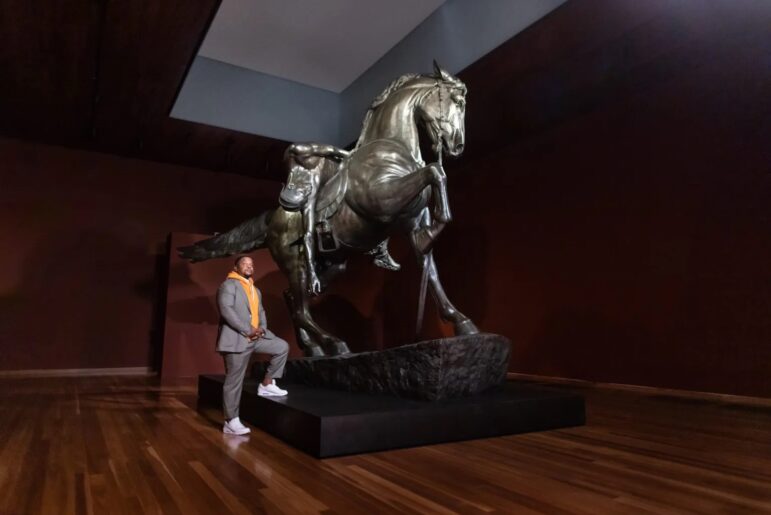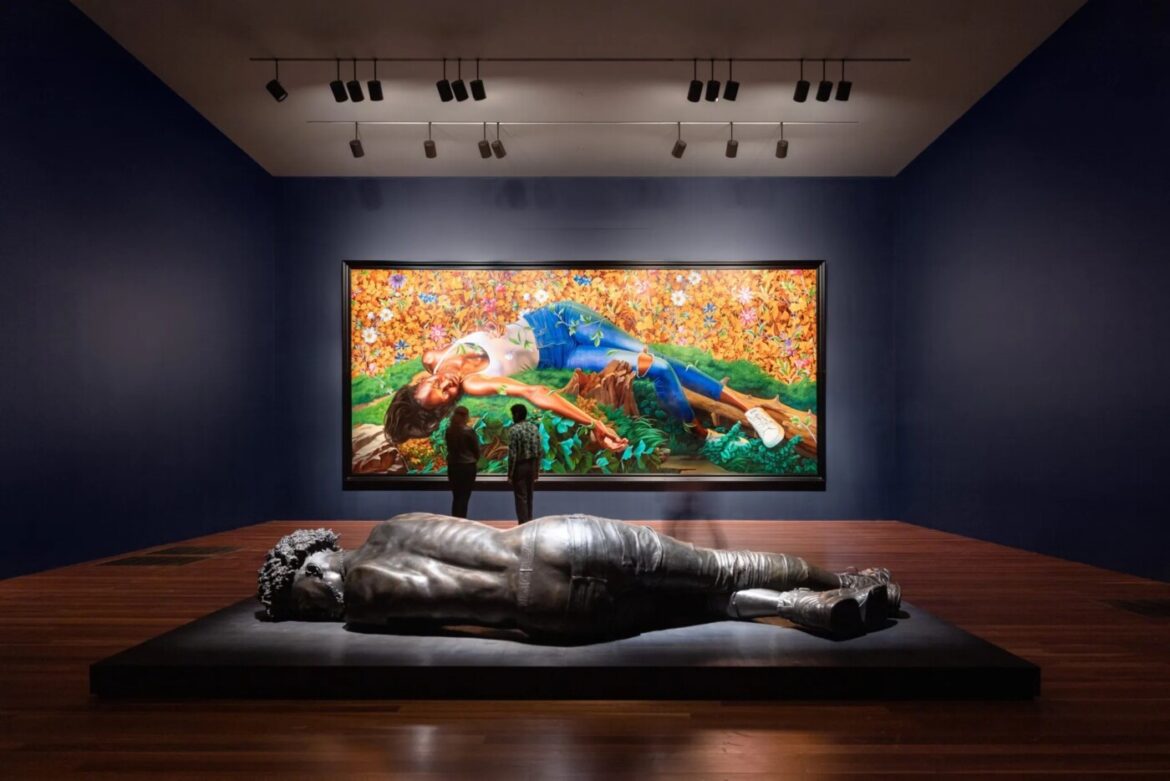An exhibition of Kehinde Wiley’s most recent work at the de Young Museum in San Francisco is as personal as it is monumental, demonstrating that Wiley’s brilliantly colored portraits and sculpted bronze figures are both beautiful and deeply resonant in emotional and political ways. “Kehinde Wiley: An Archaeology of Silence,” on view through October, is in the United States for the first time at the de Young, following its showing at the Venice Biennale.
Each of Wiley’s 25 works on display portrays a young Black male or female in a horizontal position, wounded, subdued, resting, stilled, silent or dead. Seen in the aggregate, Wiley’s work relates the figures directly to the many, many young Black people who have been victims of societal crimes over time.
Wiley, who was born in 1977, addresses that issue not by focusing on the horrors of the lost lives, but instead by painting or sculpting his subjects with sustained attention to and respect for the individual by bathing his subjects in light and detailing their appearance and dress. They are very often shown against backgrounds verdant and rich with vines whose tendrils entwine and embrace them. In Wiley’s portraits, they are as strong, vital, and awe-inspiring as the portraits of statesmen, mythological figures, royalty or saints that dominate Western European painting, and that Wiley invokes in his paintings.
The exhibition, on the second floor of the de Young, is very dark, with spotlights on the 25 paintings. In this setting, the very large horizontal canvases glow with the splendor of stained glass and the whole space has the subdued solemnity of a church.
Many of Wiley’s works are of such large scale (12 feet across) that their placement in the museum is a feat in itself. Some of his recumbent sculpted figures are of monumental proportion, yet they display the same subtlety and attention to detail as his paintings.
The crowning sculpture in the exhibition, also named “An Archaeology of Silence,” is in a room of its own, dominated by a 17.5-foot gleaming horse, its front leg raised, its head held high, bearing on its back not a general but the lifeless figure of a young Black man draped over the horse’s back, his right arm nearly touching the ground, his legs dangling on the horse’s left side. Wiley studied the military horse-and-rider sculptures that pepper the landscape of Southern cities, then created “Rumors of Water” in which a young Black rider replaces Southern generals in the saddle. The current exhibition replaces the triumphant rider with the fallen Black hero, borne in majesty.

Wiley may be best known for his presidential portrait of Barack Obama in a relaxed, forward-leaning position with a wall of flowers native to Kenya and Hawaii, behind him. “An Archaeology of Silence” will introduce audiences to the depth, complexity and subtlety of Wiley’s recent body of work.
In addition to the second-floor galleries, “An Archaeology of Silence” includes respite rooms designed to allow visitors to process their emotional reactions to this very powerful exhibition. Free admission is available on certain weekend days.
“Kehinde Wiley: An Archaeology of Silence” continues through Oct. 15 at the de Young Museum, 50 Hagiwara Tea Garden Drive, San Francisco. General admission is $15. Timed entry to the exhibition will be enforced on select days; advance ticketing is encouraged. Visit de Young (famsf.org).
